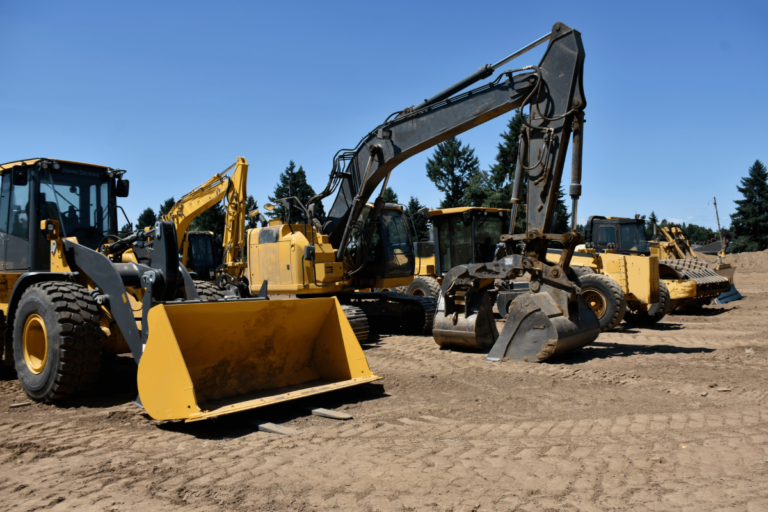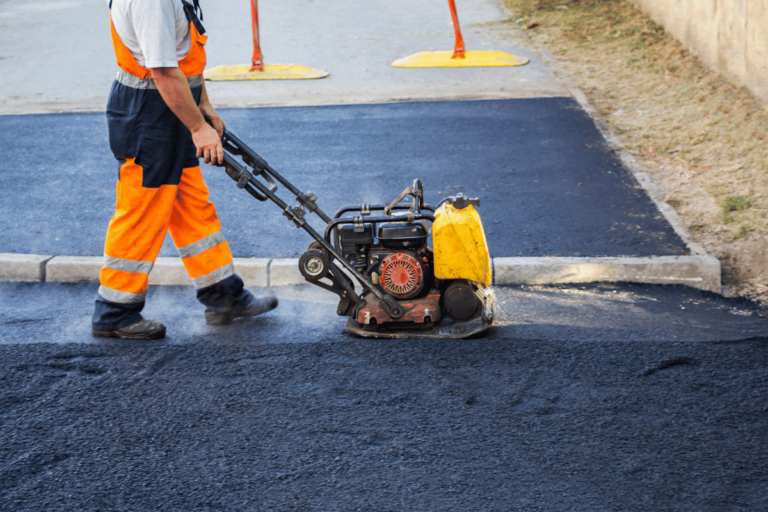Smart Building Techniques: Integrating Technology Into Modern Construction
When it comes to modern construction, the juxtaposition of traditional methods and cutting-edge technology sparks a wave of innovation in smart building techniques. You might be surprised by how seamlessly smart systems can revolutionize the way we interact with our living and working spaces. From intelligent lighting that adapts to your needs to sensors that optimize energy consumption, the possibilities seem limitless. The integration of technology not only promises heightened efficiency and sustainability but also hints at a future where buildings are more than just structures; they become living, breathing entities that cater to our evolving needs.
Key Takeaways
- Incorporate IoT devices for energy optimization and automation.
- Use green materials and energy-efficient systems for sustainability.
- Implement smart HVAC controls and LED lighting for efficiency.
- Maximize natural light and utilize water-saving fixtures.
- Pursue green certifications to showcase sustainability commitment.
The Evolution of Smart Buildings
Smart buildings have undergone a remarkable evolution in response to advancements in technology and sustainability practices. The evolutionary advancements in smart buildings have been primarily driven by technological innovations that have revolutionized the way buildings are designed, constructed, and managed.
One of the key technological innovations that have greatly impacted smart buildings is the Internet of Things (IoT). IoT allows various devices and systems within a building to communicate, collect data, and automate processes, leading to improved efficiency and performance.
Moreover, the integration of artificial intelligence (AI) has played an essential role in enhancing the capabilities of smart buildings. AI-powered systems can analyze vast amounts of data in real-time, optimizing energy usage, predicting maintenance needs, and enhancing occupant comfort.
Additionally, advancements in building materials and construction techniques have enabled the creation of more energy-efficient and sustainable structures.
Benefits of Technology Integration
You can achieve enhanced efficiency through technological integration in smart buildings. By incorporating advanced systems and automation, processes can be streamlined, leading to optimized energy consumption and operational performance.
Additionally, integrating technology allows for better sustainability practices, reducing environmental impact and promoting eco-friendly initiatives.
Enhanced Efficiency Through Technology
By seamlessly integrating advanced technologies into building systems, efficiency can be greatly enhanced. Through the implementation of smart sensors, automated controls, and data analytics, modern construction can achieve significant energy savings and cost reduction.
Smart building techniques allow for real-time monitoring of energy usage, enabling proactive adjustments to optimize efficiency. For example, lighting systems that automatically adjust brightness based on natural light levels can reduce electricity consumption. Heating, ventilation, and air conditioning (HVAC) systems equipped with smart thermostats can adapt to occupancy patterns, leading to lower energy expenses.
Moreover, the integration of technology enables predictive maintenance practices, preventing equipment failures and minimizing downtime. By utilizing predictive analytics, building managers can identify potential issues before they escalate, thereby reducing maintenance costs and enhancing operational efficiency.
Improved Sustainability Practices
Incorporating advanced technologies into building systems enhances sustainability by optimizing energy efficiency and reducing operational costs. By integrating renewable energy sources like solar panels or wind turbines, smart buildings can generate their electricity, reducing reliance on traditional power grids. This not only decreases carbon emissions but also leads to long-lasting cost savings for building owners.
Additionally, the use of green materials such as recycled steel, reclaimed wood, or energy-efficient insulation contributes to environmental conservation and promotes a healthier indoor environment.
Smart building techniques leverage technology to monitor energy usage in real-time, allowing for adjustments that further enhance sustainability practices. Automated systems can regulate temperature, lighting, and water usage based on occupancy patterns, maximizing efficiency while minimizing waste.
IoT and Building Automation
Now, let’s explore how IoT and Building Automation can revolutionize your approach to smart building techniques.
IoT offers unparalleled efficiency through real-time data collection and analysis, enhancing decision-making processes.
Additionally, the benefits of automation result in streamlined operations, cost savings, and improved occupant comfort.
IoT for Efficiency
To optimize building efficiency, consider integrating Internet of Things (IoT) technology with building automation systems. By combining IoT devices with building automation, you can achieve energy optimization and streamline operations through remote monitoring capabilities.
IoT allows for the seamless connection and communication between various building systems, such as HVAC, lighting, and security, enabling real-time data collection and analysis. Through energy optimization, IoT sensors can adjust settings based on occupancy levels, weather conditions, and energy demand, ultimately reducing energy waste and lowering utility costs.
Remote monitoring is a key feature of IoT in building automation, providing facility managers with the ability to oversee building operations from anywhere at any time. Alerts and notifications can be set up to address maintenance issues promptly, optimize energy usage, and secure a comfortable environment for occupants.
Automation Benefits
Maximize productivity and operational effectiveness in your building by harnessing the automation benefits of IoT technology integrated with building automation systems. By leveraging IoT devices and sensors, you can achieve significant energy savings through intelligent control of lighting, HVAC systems, and other utilities. These systems can adjust in real-time to environmental conditions and occupancy levels, optimizing energy usage without compromising comfort.
Remote monitoring capabilities provided by IoT technology allow you to keep tabs on your building’s performance from anywhere. You can track energy consumption patterns, receive alerts for potential issues, and even make adjustments to settings without being physically present on-site. This level of connectivity not only enhances convenience but also enables proactive maintenance, reducing downtime and operational costs.
Integrating IoT with building automation systems empowers you to create a smarter, more sustainable building environment. The seamless communication between devices ensures that your building operates at peak efficiency while offering the flexibility to adapt to changing needs effortlessly.
Smart Systems Integration
Leverage the synergy between IoT technology and building automation systems to create a seamlessly integrated network that optimizes efficiency and sustainability in your building environment. By integrating IoT devices with building automation, you can achieve enhanced energy conservation through intelligent monitoring and control of various systems within your building.
IoT sensors can collect real-time data on energy usage, temperature, lighting levels, and occupancy patterns, allowing building automation systems to adjust settings accordingly for peak efficiency. Smart monitoring systems enable you to track energy consumption patterns, identify areas of improvement, and implement targeted solutions to reduce waste and lower operating costs.
Through smart systems integration, you can streamline operations, improve occupant comfort, and contribute to a greener, more sustainable building ecosystem. By harnessing the power of IoT and building automation technologies, you can create a responsive and intelligent infrastructure that adapts to your needs in real-time, making your building a smart, energy-efficient, and environmentally conscious space.
Sustainable Construction Practices
Implementing sustainable construction practices is essential for developing environmentally friendly buildings that reduce energy consumption and minimize waste. By incorporating green materials and focusing on energy efficiency, you can make a noteworthy impact on the environment while creating a healthier space for occupants.
Here are some key points to keep in mind:
- Utilizing recycled materials: By using recycled materials in construction, you can decrease the demand for new resources and lower the carbon footprint of your building.
- Optimizing energy performance: Implementing energy-efficient systems like LED lighting and smart HVAC controls can notably decrease energy usage and operational costs.
- Maximizing natural light: Designing spaces that maximize natural light not only reduces the need for artificial lighting but also creates a more pleasant environment for occupants.
- Water conservation: Installing water-saving fixtures and utilizing greywater recycling systems can help conserve water resources and reduce utility costs.
- Green certifications: Pursuing certifications like LEED or BREEAM showcases your dedication to sustainability and can enhance the value of your building.
Enhancing Safety and Security
Enhancing safety and security in smart buildings involves integrating advanced technologies and strategic design principles to mitigate risks and safeguard occupants and assets.
Security solutions in smart buildings encompass a range of features such as biometric access control systems, video surveillance, and smart alarms. Biometric access control guarantees only authorized individuals can enter specific areas, enhancing overall building security. Video surveillance systems use high-definition cameras and real-time monitoring to detect and respond to potential security threats promptly.
Emergency response in smart buildings is optimized through interconnected systems that can quickly identify and communicate emergencies to building occupants and emergency services. Automated alerts and notifications play an essential role in ensuring rapid response times during critical situations.
Additionally, smart buildings utilize sensors and IoT devices to detect hazards like fires or gas leaks, enabling proactive measures to be taken promptly.
Data Analytics for Efficiency
Utilizing advanced data analytics in smart buildings enables efficient monitoring and enhancement of energy consumption and operational processes. By harnessing the power of data, buildings can operate at peak performance levels while minimizing resource wastage.
Real-time monitoring allows for immediate adjustments, ensuring that energy is utilized at its best. Predictive maintenance schedules can be created based on data analysis, reducing downtime and enhancing system longevity.
- Energy Enhancement: Data analytics can identify patterns and trends in energy usage, allowing for targeted enhancements.
- Predictive Maintenance: Anticipating maintenance needs through data analysis prevents costly breakdowns and guarantees continuous functionality.
- Real-time Monitoring: Instant access to data enables quick responses to deviations, maintaining efficiency levels.
- Cost Savings: By enhancing energy consumption and maintenance schedules, significant cost savings can be achieved.
- Operational Efficiency: Data analytics streamlines processes, enhancing overall operational efficiency and effectiveness.
Through data analytics, smart buildings can achieve unparalleled levels of efficiency, cost-effectiveness, and sustainability.
Future Trends in Construction Tech
In the field of construction technology, the horizon is brimming with exciting advancements and innovations poised to revolutionize the industry. Two key future trends shaping the construction landscape are the integration of construction robots and the utilization of virtual reality simulations. Construction robots are becoming increasingly prevalent on job sites, performing tasks that are repetitive, dangerous, or require extreme precision. These robots can notably increase productivity and safety while reducing construction time and costs.
Virtual reality simulations are another game-changer in the construction industry. By creating immersive environments, engineers and architects can visualize projects in a more interactive manner, allowing for better design decisions and improved collaboration among project stakeholders. This technology enables real-time modifications and adjustments, leading to more efficient construction processes and higher-quality outcomes.
To give you a clearer picture, here is a table showcasing the potential benefits of construction robots and virtual reality simulations:
| Advantages of Construction Robots | Advantages of Virtual Reality Simulations |
|---|---|
| Increased productivity | Enhanced visualization of projects |
| Improved safety | Better design decisions |
| Cost reduction | Improved collaboration among stakeholders |
Case Studies of Smart Buildings
Smart buildings exemplify the seamless integration of cutting-edge technology to enhance efficiency and sustainability in modern construction practices. When examining case studies of smart buildings, the innovative ways in which energy optimization and cost savings are achieved become apparent.
Here are some examples to inspire and inform:
- The Edge, Amsterdam: Utilizes IoT sensors to adjust lighting and temperature based on occupancy, leading to significant energy savings.
- One Bryant Park, New York City: Incorporates a state-of-the-art cogeneration system that produces electricity and heat, reducing utility costs.
- Pixel, Melbourne: Features a unique façade design with solar panels to generate renewable energy, contributing to both cost savings and sustainability.
- Pearl River Tower, Guangzhou: Utilizes wind turbines and solar panels for energy generation, showcasing a commitment to renewable sources.
- Crystal Island, Moscow: Utilizes advanced building management systems to optimize energy usage and minimize operational costs, setting a new standard in sustainable construction practices.
Conclusion
You may question the cost of implementing smart building techniques, but the long-term benefits far outweigh the initial investment. By integrating technology into modern construction practices, buildings become more efficient, sustainable, and valuable.
The use of recycled materials, energy-efficient systems, and data analytics not only reduce environmental impact but also improve safety and security.
Embrace the future of construction tech to create smarter, greener, and more innovative buildings.







